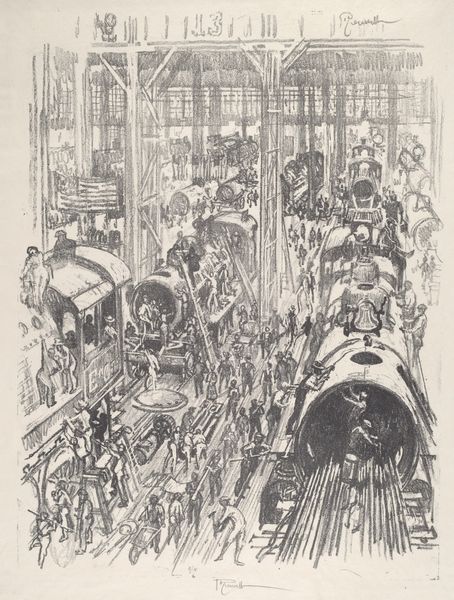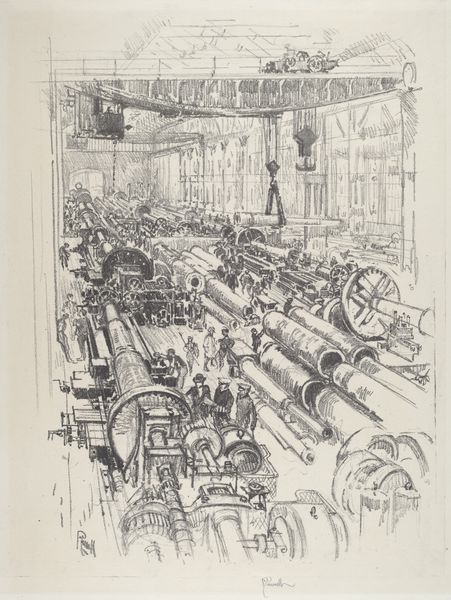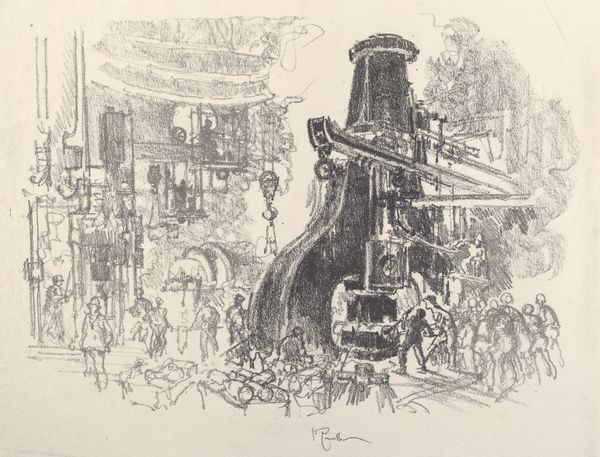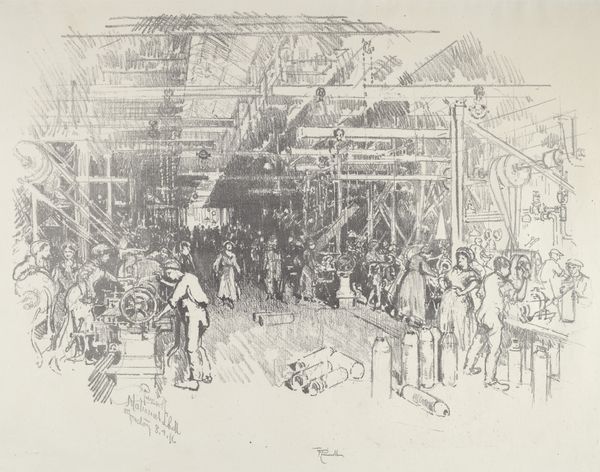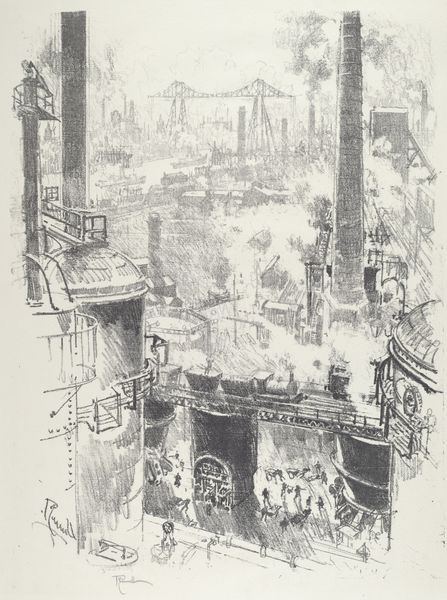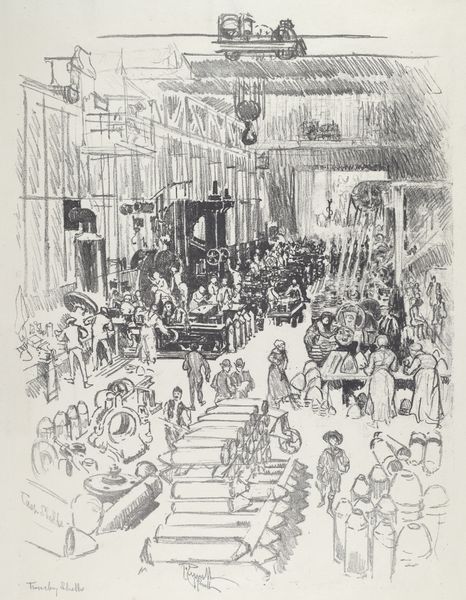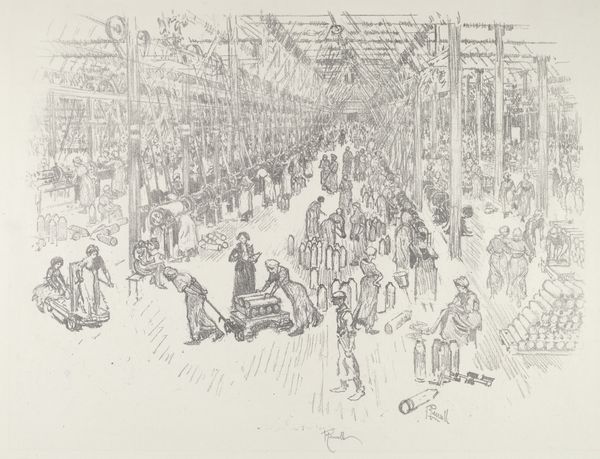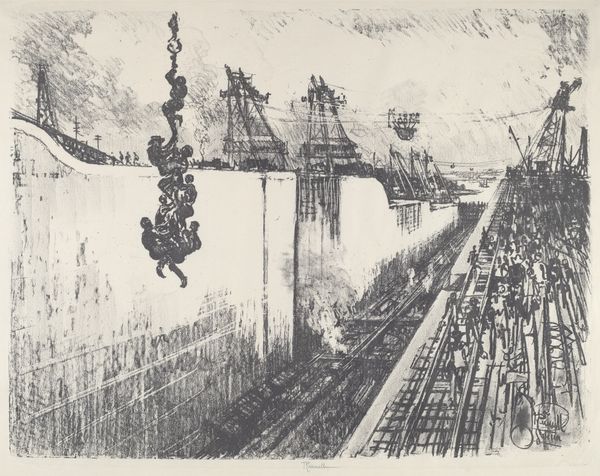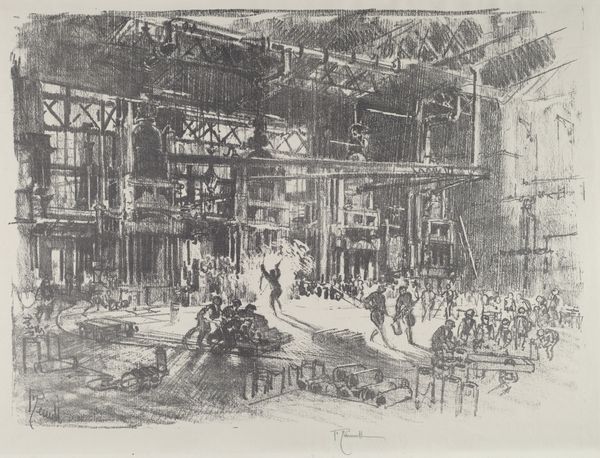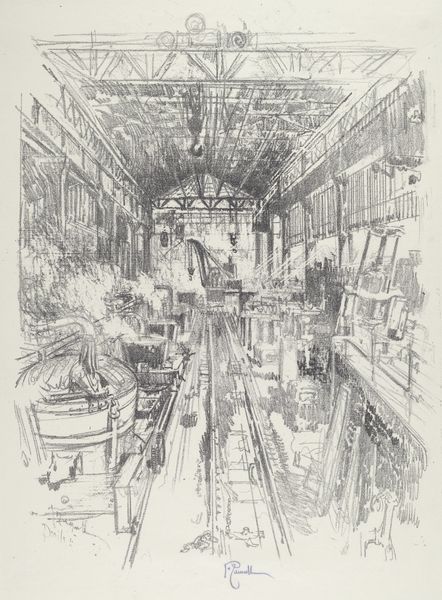
drawing, print, graphite
#
drawing
# print
#
graphite
#
cityscape
#
history-painting
#
realism
Copyright: National Gallery of Art: CC0 1.0
Editor: Here we have Joseph Pennell's "The Gun Factory," a graphite drawing created in 1917. It's a whirlwind of machinery and workers; the whole scene pulses with industry. What strikes you when you look at this? Curator: Immediately, I see the relentless churn of the war machine. Look at how Pennell prioritizes the guns themselves, lined up like products on an assembly line. The materiality is key: graphite capturing the cold, hard steel of these instruments of war. Consider the social context—this isn’t a celebration of craftsmanship, it's a documentation of mass production for destruction. Editor: That's a powerful way to put it. It makes me think about the individuals—are they laborers or just cogs in this machine? Curator: Exactly! Pennell renders them as secondary, almost ghostly, figures overshadowed by the enormity of the factory and the weaponry it produces. The means of production eclipse the human element. We need to consider the artist's consumption of images too, consider what sources he was consulting in that moment. Editor: So, you’re saying that this work isn't necessarily about the glory of war, but more about the mechanics and labor behind it? Curator: Precisely. It’s a critical examination of how industrialization fueled the conflict. It urges us to contemplate the human cost embedded in every gun manufactured, in every shell fired. Editor: That makes so much sense now. I initially saw the scene as chaotic, but I understand it much better now, seeing it as a process and its impact. Thank you! Curator: My pleasure. Thinking about the social impact of materials helps us decode art, especially one rooted in its time.
Comments
No comments
Be the first to comment and join the conversation on the ultimate creative platform.
